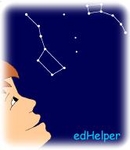By Laura G. Smith

|
Star Light, Star Bright...
By Laura G. Smith |

|
 |
Create Weekly Reading Books
Prepare for an entire week at once! |
| Leave your feedback on Star Light, Star Bright... (use this link if you found an error in the story) |
 |
Free Space and Stars Worksheets | edHelper.com
|
 |
Science
|